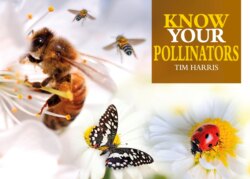Читать книгу Know Your Pollinators - Tim Harris - Страница 10
На сайте Литреса книга снята с продажи.
4 Western Honeybee Apis mellifera
ОглавлениеCharacteristics
Length: Queen 0.70–0.79 in (18–20 mm); worker 0.35–0.39 in (9–10 mm); male 0.47–0.51 in (12–13 mm).
Flight season: Mostly March–October.
Nectar sources: Very varied.
Habitat: Meadows, farmland, woodland, parks, gardens.
Yellowish-buff, with dark bands on the abdomen, this bee probably originated in Africa and was one of the first insects to be domesticated, around 9,000 years ago. Honeybees were taken to North America in 1622 and now live on every continent apart from Antarctica. Most are kept in artificial hives, from which honey and wax combs are harvested. Hives are taken to areas where orchards require pollination.
Unlike most bees, its colonies may persist for several years, and queens can live to eight years of age. If a colony becomes too large, its old queen and many of its workers may “swarm” in spring—leaving the nest en masse to relocate. If this happens, the new queens that emerge fight for dominance.
Colonies may hold up to 80,000 bees, mostly workers that secrete wax to build the hive, clean and guard the nest, raise the young, and forage for nectar and pollen. Workers can communicate the location of good sources of nectar by performing a figure-eight dance. Once the nectar is brought back to the nest, it is converted into honey to feed the colony, and the pollen collected in the workers’ “bee baskets” is used to make “bee bread” to feed the young.
